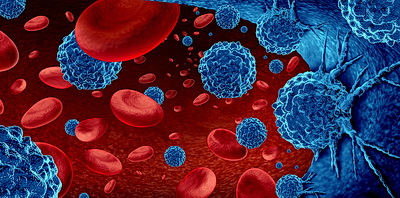
The Significance of Blood
Blood is the essence of life. It is the fluid that keeps our bodies going. As it circulates, it transports important nutrients and oxygen to every cell. It also collects metabolic waste from the cells and allows our body to get rid of it through the excretory system. Blood is a mixture of various components. Each component performs a specific function. Together, they allow our bodies to survive and thrive.
Our blood is made up of the following components:
Plasma
Around 55% of the blood in humans is made up of this component. Plasma primarily contains water and proteins. It also contains glucose and other nutrients. The remaining 45% of the blood is made up of red blood cells, white blood cells, and platelets.
Red Blood Cells
Red blood cells are disc-shaped cells. They are slightly indented towards the center. These unique cells are responsible for transporting oxygen from the lungs to all parts of the body. The life of red blood cells is 120 days and the body regularly replaces them. A normal functioning body produces two million red blood cells every second.
White Blood Cells
White blood cells are the body’s internal defense against diseases. Though they make up only 1% of the blood. The presence of these cells protects the body against viral infections.
Platelets
Platelets are an integral part of the blood. They help the blood clot in case of a wound or injury and also prevent internal bleeding.
It is essential that these components run as effectively as possible, but what if something happens and they don’t perform the way they should?
Blood Disorders?
Blood disorders are conditions that impact the blood’s ability to perform its functions effectively; such as if the red blood cells don’t carry the proper number of oxygen it needs. If this happens or any other defect that causes the cells to not function the way they should, a blood disorder has developed and needs to be addressed ASAP, since disorders of the blood can impair the ability of other organs to perform their functions properly and that can be particularly dangerous.
Common Blood Disorders
Many blood disorders take their names from the components of the blood they affect. Some of the most common disorders include the following:
Anemia
Anemia is a type of disorder that affects the red blood cells and is the most common type of blood disorder in the US. Around 5.6% of the US population suffers from some type of anemia. This condition can be hereditary or may develop over time due to environmental factors and/or poor diet.
Anemia is a condition that affects the ability of the red blood cells to transport oxygen. As a result, an inadequate amount of oxygen reaches the organs in the body and the person may feel fatigued and have a lack of energy.
There are many types of anemia. Some of them are caused due to structural changes in the red blood cells. Other types are either caused due to a lack of iron or due to an insufficient number of red blood cells in the blood. Most types of anemia can be treated through iron supplements, improved diet, and blood transfusions.
Hemophilia
Hemophilia is a rare, genetic blood disorder. In the US, 1 in every 5,000 male children are born with hemophilia. It affects the ability of the blood to clot. As a result, a person suffering from hemophilia is at a higher risk of excessive bleeding even with the slightest cut.
Human blood contains proteins called clotting factors. The presence of clotting factors allows the blood to clot in case of a wound. People with hemophilia lack this protein in their blood. The condition is caused by a mutation in one of the genes responsible for making clotting factors. Though hemophilia is a genetic condition, it is not always hereditary. Children with no prior history of the condition may also be born with it. In some cases, people may develop hemophilia later in life.
The severity of the condition can be determined by the number of clotting factors present in the blood. The lower the clotting factor, the more you are at risk of excessive bleeding. There are many treatment options available to manage and cure this condition. Doctors may prescribe treatments based on the severity of the condition.
Leukemia

Even though it is often considered a disease in children, leukemia affects far more adults. Every year, almost 30,000 new cases of leukemia are reported in the US alone. It affects more men compared to women and is more common in white people than in other races.
Leukemia is a type of cancer that affects the white blood cells. Unlike other cancers, it does not form a mass. Instead, it leads to an overproduction of white blood cells.
Leukemia begins in the soft tissues of the bone marrow. The bone marrow is responsible for producing all types of blood cells. It produces billions of new cells every day. The problem arises when the DNA of the new blood cells incurs damage. This causes uncontrollable growth and division of white blood cells and the result can be a feeling of tiredness, unexplained fever, bruising, headaches, excessive bleeding, unintentional weight loss, and infections.
A normal functioning white blood cell fights against infections. However, the abnormally high number of white blood cells do not perform any function and do not die naturally. Instead, they overcrowd the blood, leaving little room for the red blood cells and platelets to perform their function adequately. As a result, leukemia leads to multiple blood disorders.
